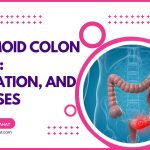Constant Stomach Pain for Days: 7 Causes Simplified.
Our content is not intended nor recommended as a substitute for medical advice by your doctor. Use for informational purposes only.
The most common causes of stomach pain for days include:
- Faulty diet and eating habits.
- Food intolerances.
- Gastritis and peptic ulcer disease.
- Functional dyspepsia.
1. Food intolerance / faulty diet and eating habits.
Abdominal pain is a common symptom with a wide range of causes. The abdominal pain can be a reflection of a disease or indigestion.
Overconsumption of certain foods and drinks (such as AIcohoIic) can cause constant stomach pain for days.
The stomach pain can be a result of:
- Eating the wrong types of food.
- Eating Excess amounts.
- Bad eating habits (such as eating before bedtime or talking while eating.
Types of foods that commonly cause stomach pain that lasts for days include:
- Fatty foods:
Many people are intolerant to fat. However, whenever you eat above-average amounts, You will experience digestive issues such as constant stomach pain, distension, and diarrhea for days. - Lactose (In milk and dairy products):
As we grow, we naturally lose the ability to digest lactose in milk. As a result, lactose intolerance is more widespread than you think, affecting an average of 65% of the world’s population.
Moreover, lactose intolerance may affect up to 90% of other races, such as blacks, Native Americans, and Asian Americans (reference).
Eating lactose can cause constant stomach pain for days and bloating while unaware of it. - Too much fructose.
Fructose is the chief sugar in most fruits. It is also found in abundance in honey and table sugar. According to Dr. Norton Greenberger from Harvard Medical School, 75% of people will get diarrhea from ingesting 40-80 grams of fructose. - Gassy foods:
Consumption of too many gas-producing foods can also lead to constant stomach pain that lasts for days.
The complete list of gassy foods is in the table below. - Others:
– Sugar substitutes such as diet sodas, aspartame, etc.
– Too much caffeine.
– Too many spicy foods.
| GASSY FOOD | EXAMPLES |
| 1. Milk and dairy products | – milk, – ice cream, – and sometimes, cheese and yogurt. |
| 2. Vegetables | – Broccoli, – cauliflower, – Brussels sprouts, – onions, – leeks, – parsnips, – celery, – radishes, – asparagus, – cabbage, – kohlrabi, – cucumber, – potatoes, – turnips, – and rutabaga. |
| 3. Fruits | – Prunes, – apricots, – apples, – pears, – peaches, – raisins, – bananas |
| 4. Whole grains | -wheat, – oats, – bagels, – wheat germ, – pretzels, – bran/bran cereal |
| 5. Legumes | – Beans, – peas, – baked beans, – soybeans, – lima beans |
| 6. Fats | Fried and high-fat foods. |
| 7. Drinks | – Carbonated beverages, – AIcohoIic drinks (especially if carbonated). – carbonated medications |
| 8. Others | – chewing gum, – artificial sweeteners |
2. Gastritis and peptic ulcers.
Acute gastritis and flare-ups of chronic gastritis and peptic ulcer disease often lead to stomach pain that lasts for days or weeks.
Causes:
- H. Pylori infection (a stomach bug that selectively inhibits the stomach and causes gastritis and peptic ulcer disease).
- Nonsteroidal anti-inflammatory drugs such as aspirin and ibuprofen (the least harmful NSAID is paracetamol).
- Other medications, such as antibiotics and corticosteroids.
- Irritants such as AIcohoI and spicy foods.
Symptoms:
- Middle stomach pain a few inches above the belly button (epigastric area).
- The character of pain: burning, gnawing, or dull aching continuous pain.
- Triggered by: eating, particularly acidic, spicy foods and caffeinated drinks.
- The pain is often associated with nausea or vomiting.
- Fullness in the middle of the stomach after eating.
- The pain often improves with anti-acid treatments such as antacids, H2 blockers (famotidine), or proton pump inhibitors (omeprazole).
- With peptic ulcers: vomiting of blood, the passage of black stool, and symptoms of anemia may be present if the ulcer is bleeding.
Gastritis and peptic ulcers are treated primarily by eliminating the causes (treatment of H. Pylori, etc.).
Also, medications such as proton pump inhibitors (such as omeprazole, esomeprazole, and others), H2 blockers (such as famotidine), and antacids are effective.
3. Acute gastroenteritis/food poisoning.
Viral gastroenteritis (stomach flu) is the most common cause of acute infections of the digestive system (in about 60%) (reference).
Classically, digestive system infections and food poisoning have symptoms other than stomach pain, such as nausea, vomiting, and diarrhea.
However, early or mild cases may present with constant stomach pain for hours or days without other symptoms.
The symptoms of acute viral gastroenteritis include:
- Acute onset diarrhea. However, constant stomach pain for days can be present without diarrhea, as with milder cases and in the early stages of the disease.
- Stomach (abdominal) cramps.
- Nausea and maybe vomiting.
- Sometimes, gas and bloating occur.
- Low-grade fever.
- It usually lasts for one to 4 days. But diarrhea may become constant for a week or two.
Other infections that can cause acute attacks of constant diarrhea and gas include:
- Bacterial infections (The non-inflammatory type).
Bacterial diarrhea usually causes severe bloody mucus diarrhea with high-grade fever (inflammatory diarrhea).
However, milder forms of bacterial diarrhea (non-inflammatory) can cause constant diarrhea and gas. - Protozoal infections (especially giardiasis).
Giardiasis is the most common type of protozoal infection (reference: CDC). It is caused by ingesting contaminated foods or drinks.
Giardiasis can cause severe foul-smelling, yellowish, and constant diarrhea for days or weeks.
It also causes fat malabsorption, resulting in yellowish constant diarrhea and gas.
4. Functional dyspepsia.
Functional dyspepsia (indigestion) is a common digestive condition without a clear cause. It causes recurrent stomach pain or discomfort (especially after meals).
The cause is unclear, but they are related to risk factors such as stress, anxiety, and h. Pylori infection.
Functional dyspepsia is classified as (functional bowel disease) as no detectable cause or lesion is present.
The diagnosis of functional dyspepsia is considered only when your doctor excludes other causes of constant stomach pain, such as gastritis and peptic ulcers.
Symptoms of functional dyspepsia:
- Pain or discomfort in the middle of the stomach (2 to 4 inches above the belly button).
- Early satiety soon after you start eating.
- A sense of fullness in the upper-middle part of your abdomen after eating.
- Epigastric (upper-middle abdomen) burning.
- Bloating after eating.
- Excessive belching.
- Nausea can also be present.
5. Pelvic organ pain in females.
Lower stomach pain that lasts days or weeks may result from female pelvic organs.
Common diseases include:
- Menstruation and premenstrual syndrome.
- Ovulation pain.
- Early pregnancy.
- Ectopic pregnancy.
- Endometriosis.
- Pelvic congestion syndrome.
- Uterine fibroid.
- Ovarian cysts or inflammation.
- Pelvic inflammatory disease.
This article discusses these conditions: Causes of lower abdominal tightness in females.
6. Medications:
Recent or chronic use of certain medications may lead to constant stomach pain for short days or prolonged pain for weeks or months.
Common medications that cause stomach pain:
- Nonsteroidal anti-inflammatory drugs such as ibuprofen aspirin (Paracetamol or Tylenol® is the least likely NSAID to cause vomiting and abdominal pain).
- Cancer chemotherapy.
- Anti-gout drugs.
- Heart medications such as digoxin, anti-hypertensives, and beta-blockers.
- Diuretics (medications that increase urine) treat excess fluid in your body, like heart failure, liver and kidney diseases.
- Some antibiotics as erythromycin, sulfonamides, etc.
- Sulfasalazine.
- Nervous system medications such as antiseizure and antiparkinson drugs.
- Overdose of vitamin supplements.
7. Chronic condition (acute flare-ups)
A. IBS
Irritable bowel syndrome is a common disease affecting about 15% of people. It causes attacks of stomach pain for days, bowel habit changes, bloating, and others (learn more).
B. Gallstones disease.
Gallstone disease refers to the presence of gallstones inside the gallbladder. Gallstones can cause stomach and right upper abdominal pain attacks lasting for hours.
C. Gastroparesis.
Gastroparesis is a term that describes the delayed emptying of stomach contents due to diseases such as diabetes. People with gastroparesis feel fullness and stomach pain lasting for days or weeks.
D. IBD.
Inflammatory Bowel Diseases (IBD) include Crohn’s disease and Ulcerative Colitis. A group of disorders with chronic inflammation and ulceration of the digestive tract. Symptoms include constant stomach pain, diarrhea, blood in stool, and others.
7. Less common but serious causes:
A. Acute cholecystitis: acute inflammation and infection of the gallbladder.
B. Acute appendicitis.
C. Acute pancreatitis.
D. Acute hepatitis.
E. Acute diverticulitis.
F. Intestinal obstruction.
G. Intraabdominal cancer.
8. Rare causes.
- GERD (it often causes heartburn in the chest rather than abdominal pain).
- Ruptured aortic aneurysm.
- Familial Mediterranean fever.
- Acute intermittent porphyria
- Diabetic ketoacidosis.
- Typhoid fever.
- Sickle cell disease.
- Anterior cutaneous nerve entrapment syndrome.
- Endometriosis.
- Ectopic pregnancy.
- And many others.
When to see a doctor for constant abdominal pain?
- Severe or extreme forms of pain that are not going away.
- Pain that awakens you at night.
- Severe or bloody diarrhea.
- Fever.
- Vomiting.
- There is severe tenderness over the abdomen (particularly the lower right and the upper right abdomen for fear of acute appendicitis and cholecystitis, respectively).
- Dizziness, difficulty breathing, or coma.
- Evidence-based
- Written by a doctor.






